How ABA Therapy Supports the Development of Peer Relationships

Understanding the Impact of ABA on Social Integration for Children with Autism
Autism spectrum disorder presents unique challenges in social interaction and peer relationship development. Applied Behavior Analysis (ABA) has emerged as a scientifically supported, effective approach to fostering social skills, enabling children with autism to build meaningful peer relationships. This article explores how ABA strategies affirm social development, the mechanisms behind their success, and the evidence supporting their application.
The Foundation of ABA Therapy in Social Skill Development
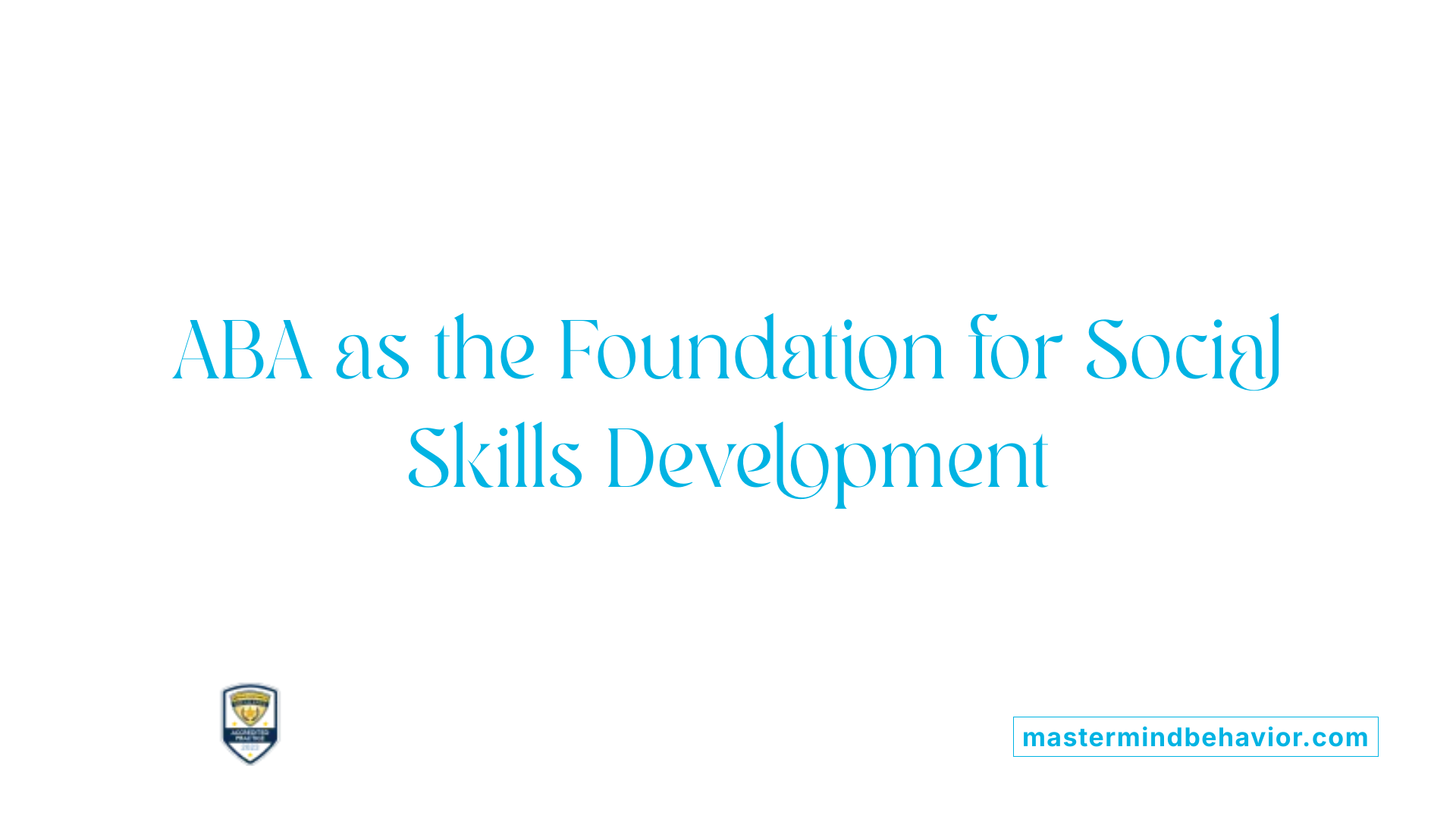
What is ABA therapy and how does it support social skills development?
Applied Behavior Analysis (ABA) therapy is an evidence-based method widely recognized for supporting children with autism. It focuses on teaching essential social skills, such as communication, turn-taking, sharing, and recognizing social cues, by using structured teaching techniques. ABA employs methods like play-based learning, task analysis, and positive reinforcement to help children learn and practice socially appropriate behaviors.
Within therapy sessions, children are exposed to structured activities and role-playing scenarios that mimic real-life social interactions. This approach not only enhances communication abilities—both verbal and nonverbal—but also improves emotional regulation. Over time, ABA supports children in applying these skills in everyday contexts, like school or social gatherings, enabling better peer relationships and social integration.
How are goals set within ABA programs to improve social skills?
Goals in ABA programs are carefully individualized, based on comprehensive assessments conducted by Board Certified Behavior Analysts (BCBAs). These assessments identify each child's specific strengths and challenges regarding social interaction. Based on this, personalized targets such as initiating conversations, understanding facial expressions, making eye contact, and maintaining friendships are established.
Progress towards these goals is continuously monitored through data collection during therapy sessions. This ongoing tracking allows therapists and parents to adjust strategies, ensuring that each child's social development continues effectively. The tailored nature of ABA ensures that goals are meaningful and achievable, helping children build confidence and competence in social situations.
Techniques and Strategies in ABA to Foster Peer Relationships
What ABA techniques are used to teach social skills and peer interactions?
ABA approaches incorporate various methods to teach essential social skills. Social stories are used to prepare children for typical social situations by illustrating appropriate behaviors. Visual supports, like pictures and visual schedules, help children understand social cues and routines. Role-playing and modeling allow children to practice social exchanges in a safe environment, mimicking real-life interactions.
Natural Environment Teaching (NET) is a strategy that embeds learning in everyday activities, enabling children to generalize social skills across settings. Peer-mediated interventions involve training peers to interact positively with children with autism, fostering authentic social exchanges. All these techniques aim to teach social norms such as greeting others, sharing, taking turns, and responding to social cues.
Positive reinforcement, another cornerstone of ABA, encourages children to engage in desired behaviors by rewarding successes, which strengthens these behaviors over time. Shaping behaviors through reinforcement gradually builds more complex social skills. Combining these methods helps children apply newly learned skills in real-world social contexts, thus enhancing their peer relationships.
How do reinforcement strategies aid in developing social behaviors?
Reinforcement strategies play a critical role in encouraging children to practice and maintain social behaviors. Positive reinforcement involves rewarding appropriate social interactions—like making eye contact or sharing toys—with praise, tokens, or other preferred items. This encouragement boosts motivation and confidence, making children more likely to repeat these behaviors.
Consistent reinforcement helps embed social skills into daily routines, making behaviors such as initiating conversations or responding to greetings more natural. Over time, children learn to associate positive outcomes with social engagement, leading to increased independence in peer interactions. This process not only promotes the development of social behaviors but also supports emotional well-being by reinforcing successful social experiences.
Techniques Summary
| Technique | Description | Purpose |
|---|---|---|
| Social Stories | Visual narratives explaining social norms | Prepare children for social situations |
| Visual Supports | Pictures, schedules, cues | Clarify social cues and routines |
| Role-Playing | Practicing scenarios | Build real-world social skills |
| Modeling | Demonstrating appropriate behaviors | Show correct social interactions |
| Natural Environment Teaching (NET) | Embedding learning in daily activities | Promote skill generalization |
| Peer-Mediated Interventions | Training peers to interact | Encourage authentic social exchanges |
| Positive Reinforcement | Rewards for desired behaviors | Increase motivation and repetition |
This comprehensive approach ensures children with autism can develop meaningful peer relationships, leading to improved social skills, confidence, and emotional health.
Generalizing Skills and Fostering Social Engagement Beyond Therapy
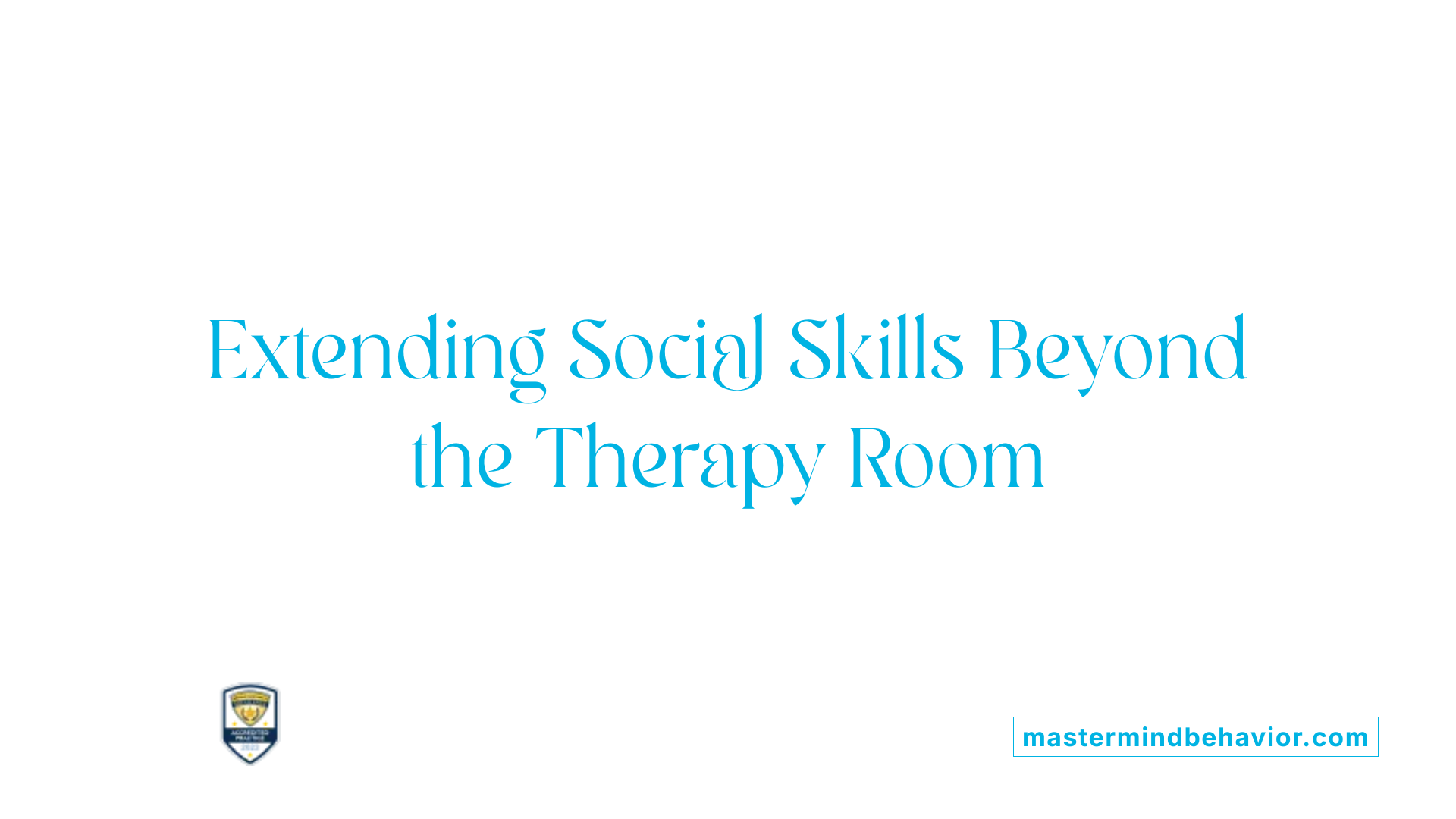 ABA therapy focuses not only on skill development within structured sessions but also emphasizes the importance of applying these skills in everyday life. This process, known as generalization, ensures that children with autism can use social behaviors across various settings, such as home, school, and community.
ABA therapy focuses not only on skill development within structured sessions but also emphasizes the importance of applying these skills in everyday life. This process, known as generalization, ensures that children with autism can use social behaviors across various settings, such as home, school, and community.
Natural environment teaching (NET) is a prominent method used within ABA to embed social learning into daily activities. Therapists and parents create opportunities to practice social skills during routine tasks or in natural settings, like at the grocery store or during playdates. By doing so, children learn to carry over their skills beyond the therapy room.
Community resources and inclusive environments also play a significant role. Support groups, recreational programs, and inclusive schools provide real-world contexts for children to interact with peers. These settings encourage acceptance and provide chances for children to develop social bonds, boosting confidence and emotional well-being.
Family involvement is critical for reinforcing social skills. Caregiver training helps parents and siblings understand how to support and model appropriate behaviors consistently. Creating routine opportunities, such as regular playdates and social outings, aids in skill retention and increases the child's comfort in social situations.
Education initiatives that promote peer understanding and acceptance are equally important. When peers learn about autism and practice inclusive behaviors, they create more welcoming environments. This reduces anxiety for children with autism and facilitates more effective social interactions.
In summary, ABA encourages extending social learning beyond formal sessions through natural and community-based activities. Combining therapy with supportive family and community efforts helps children with autism apply their social skills broadly, fostering meaningful and lasting peer relationships.
Research Evidence Supporting ABA's Effectiveness in Social Development
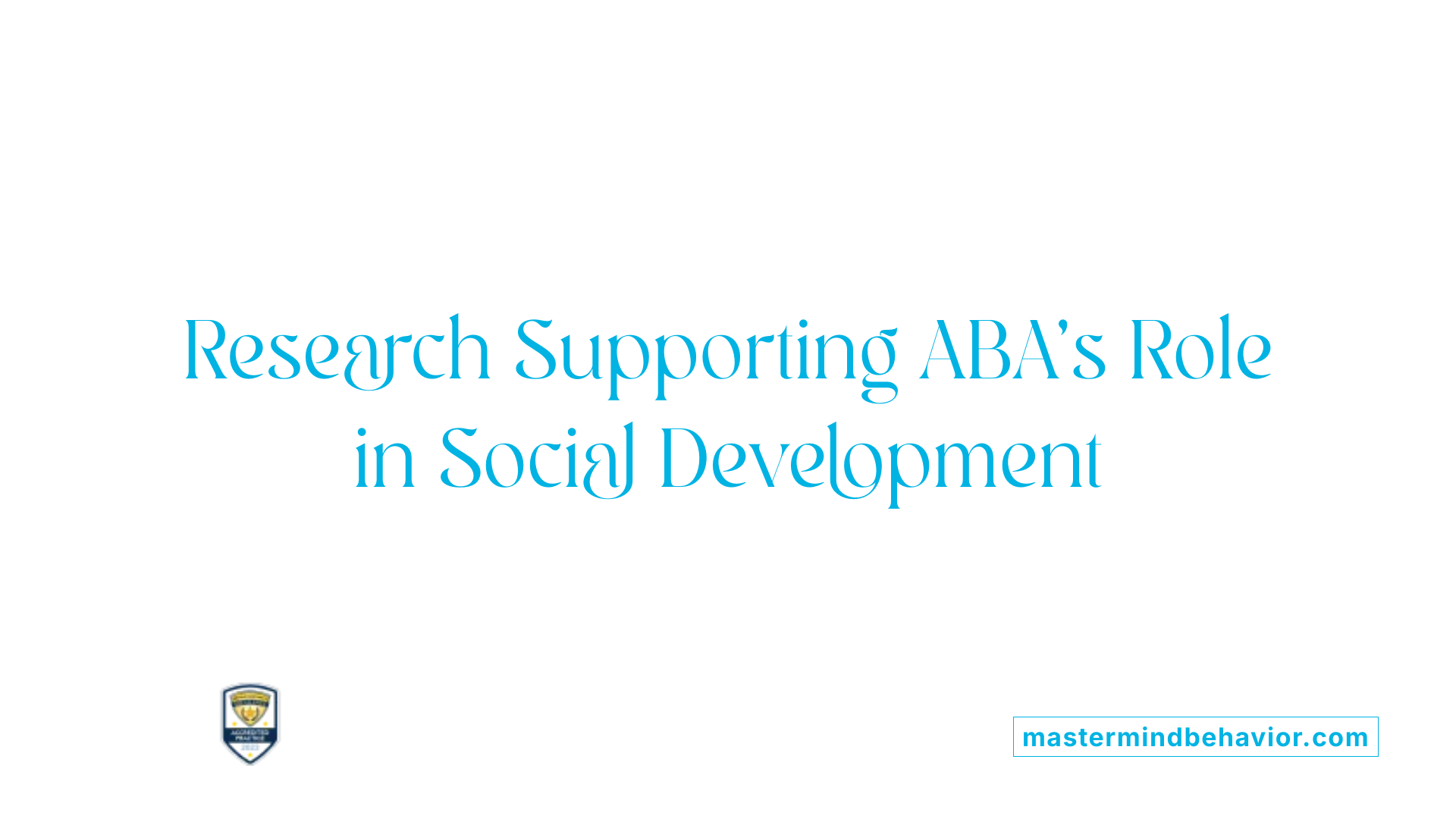
What research supports ABA's role in developing peer relationships?
Research consistently demonstrates that Applied Behavior Analysis (ABA), especially approaches rooted in naturalistic teaching methods like the Early Start Denver Model (ESDM), effectively enhances social skills and peer relationships in children with autism. One key finding is that structured ABA strategies foster social reciprocity, joint attention, and understanding of social cues—skills essential for meaningful peer interactions. Studies show that when children learn to recognize facial expressions, interpret body language, and respond to social cues through ABA techniques, their ability to engage with peers improves significantly. Further, parent-mediated ABA interventions play a vital role. Training parents to reinforce social skills at home and in natural settings amplifies the effects of formal therapy, ensuring children practice skills in diverse, real-world environments.
How do naturalistic ABA methods contribute to social skills development?
Naturalistic ABA methods, like the Early Start Denver Model, embed teaching within everyday interactions rather than isolated drills. This approach promotes spontaneity in social exchanges and makes learning more relevant to real-life situations. By integrating social skill development into play, routines, and unstructured activities, children are more likely to generalize these skills across different settings and with various people. These methods encourage peer engagement by creating opportunities where children can practice social behaviors naturally, leading to more genuine and sustained social relationships. Research indicates that such embedding of learning fosters better social integration and overall emotional well-being, making naturalistic ABA approaches a valuable tool in supporting social development for children with autism.
The Role of Early Intervention and Education in Social Skill Growth
Why is early ABA intervention crucial for social development?
Early ABA intervention takes advantage of a child's heightened neural plasticity during early childhood, which is essential for learning new skills. By starting social skills training early, children with autism can develop foundational abilities such as eye contact, turn-taking, and initiating conversations before less adaptive behaviors become ingrained. This proactive approach helps in establishing healthier peer relationships and smoother social integration as they grow.
How do inclusive educational strategies enhance peer relationship development?
Inclusive classrooms promote acceptance and understanding among all students. When children with autism learn alongside neurotypical peers, it creates natural opportunities for social interactions. Using ABA techniques within these settings encourages children with autism to practice skills like sharing, responding to cues, and initiating play during typical classroom activities. This environment fosters stronger, more enduring friendships and supports social development.
Strategies and practical approaches
- Peer-mediated interventions: Training peers to interact and support children with autism.
- Visual supports: Using visual schedules and social stories to prepare children for social scenarios.
- Structured routines: Creating predictable patterns that make social interactions easier to navigate.
- Community and recreational programs: Offering additional opportunities for socialization outside school.
| Strategy | Purpose | Implementation Example |
|---|---|---|
| Peer-mediated intervention | Promote natural social interactions | Peer buddy systems in classrooms |
| Visual supports | Enhance understanding of social cues and routines | Social stories about sharing or greetings |
| Inclusive activities | Encourage diverse social engagement | Group projects and community events |
Research emphasizes that integrating early behavioral interventions like ABA with inclusive education settings not only improves social skills but also boosts confidence and emotional well-being. As children with autism learn to navigate social situations with their peers, they develop better communication and relationship skills, leading to a more inclusive and supportive environment for all learners.
Building Supportive Environments and Community Networks
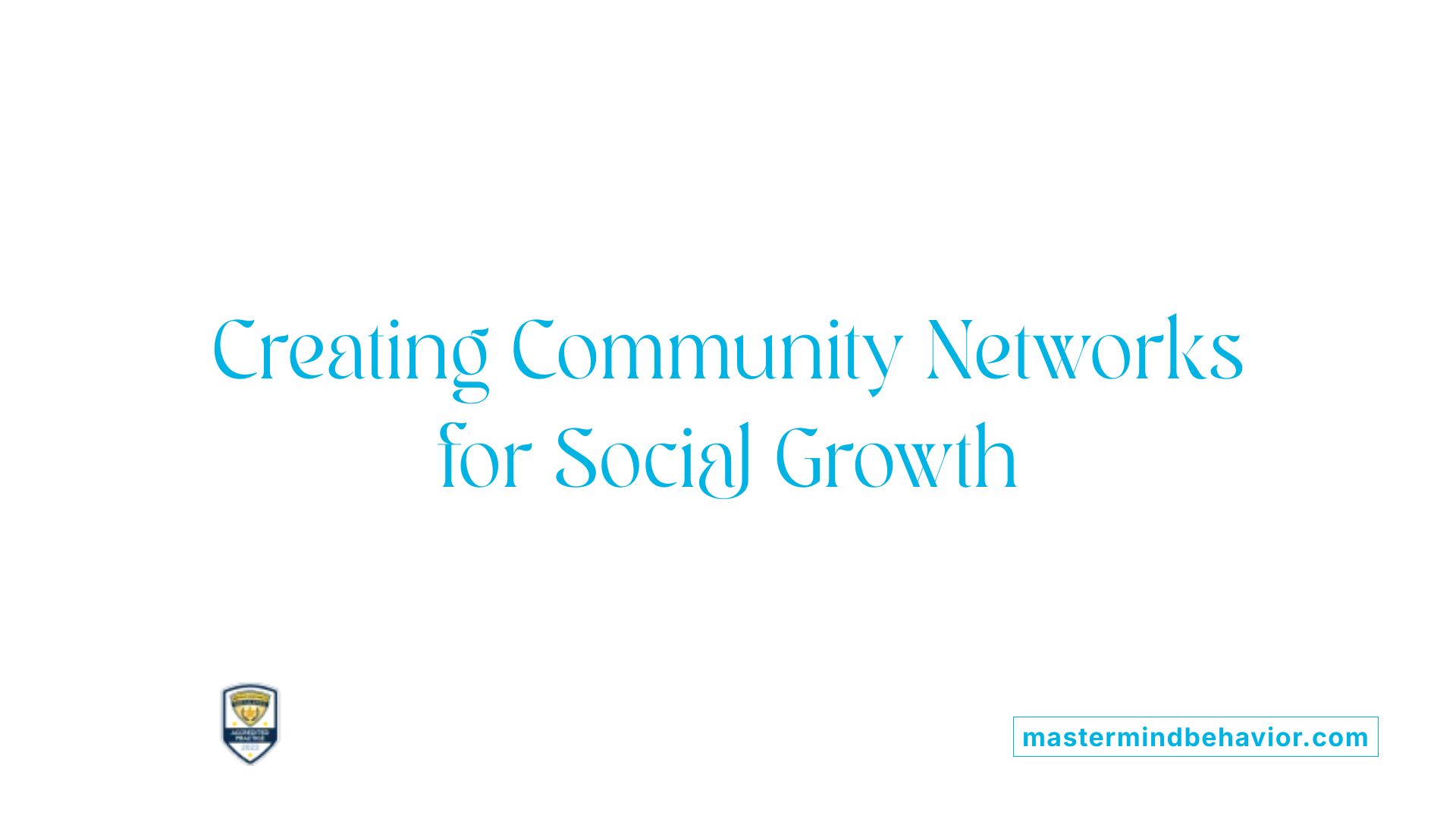
How do community resources support the social development of children with autism?
Community resources such as support groups, recreational programs, and inclusive activities play a vital role in fostering social skills among children with autism. These environments offer natural settings where children can practice social interactions with peers outside of formal therapy sessions. For example, support groups provide a platform for shared experiences, while inclusive recreational activities allow children to engage with neurotypical peers in a fun and supportive atmosphere.
By participating in these community-based programs, children can apply social skills such as turn-taking, sharing, and interpreting social cues in real-life contexts. Moreover, these activities can reinforce what children learn during structured interventions like ABA therapy, ensuring skills are transferred into everyday settings. Additionally, community involvement helps children develop confidence and independence, while also promoting social acceptance among wider peer groups.
The Long-Term Impact of ABA on Social Confidence and Emotional Well-Being
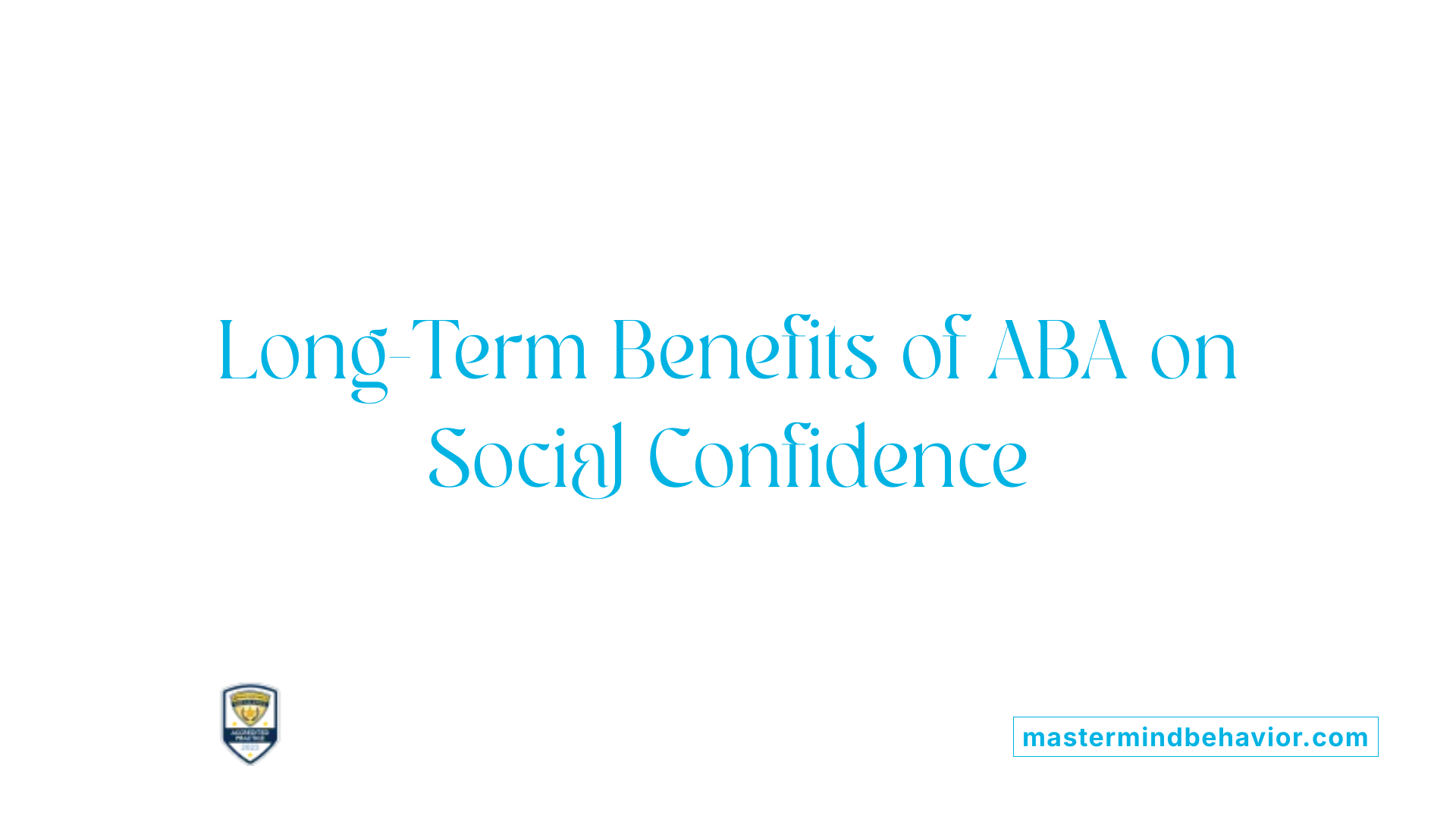
Building confidence through social milestones
Behavioral therapy approaches like ABA focus on helping children with autism reach important social milestones. By teaching skills such as initiating conversations, taking turns, and recognizing social cues, children gradually gain confidence in their interactions. Achieving these milestones not only boosts self-esteem but also motivates children to engage more actively with peers.
Reducing anxiety and depression
Research shows that children with autism who develop stronger social skills tend to experience lower levels of anxiety and depression. ABA therapy's emphasis on positive reinforcement and structured social learning creates a safe environment for children to practice interactions. As they become more comfortable and successful in social situations, their emotional health improves significantly.
Support for emotional regulation and independence
ABA programs teach children strategies for emotional regulation, including coping mechanisms for managing sensory sensitivities and emotional responses. This support leads to increased independence in daily activities and social settings. Over time, children become more capable of navigating complex social environments, fostering greater autonomy and emotional stability.
| Long-term Benefits | Description | Impact |
|---|---|---|
| Increased Social Confidence | Mastery of reciprocal social skills such as initiating, sharing, and turn-taking | Better peer relationships, higher self-esteem |
| Emotional Regulation | Learning to control impulses and respond to emotions appropriately | Reduced anxiety, more emotional stability |
| Improved Social Participation | Ability to maintain friendships and participate in group activities | Enhanced quality of life, better integration |
| Overall Well-being | Development of resilience and coping skills | Higher life satisfaction |
Research continues to highlight that early and consistent ABA intervention leads to lasting improvements in social and emotional functioning, making it a vital part of long-term support for children with autism.
Empowering Children for Social Success
ABA therapy plays a vital role in equipping children with autism with the social tools necessary for building peer relationships and thriving socially. Through individualized strategies, evidence-based techniques, and collaborative efforts involving families and communities, ABA fosters not only skill development but also confidence and emotional resilience. As research continues to support its effectiveness, ABA remains a cornerstone in supporting children with autism on their journey toward meaningful social engagement and inclusion.
References
- Social Skills Development Through Peer Interaction for Kids with ...
- Social Skills in ABA Therapy: Helping Your Child Build Friendships
- How ABA Therapy Can Support Your Child's Development
- How ABA Therapy Supports Child Development
- Understanding ABA ASD: Key Benefits for Autism Treatment
- 7 Surprising Benefits of ABA Therapy for Kids You Need to Know
- Harnessing ABA Therapy for Social Skills Development in Autism
- Autism and Friendships: Supporting Social Growth | Blossom ABA
Recent articles

How To Integrate ABA Strategies During Mealtime And Snack Time
Practical ABA Techniques to Enhance Mealtime Experiences for Children with Autism
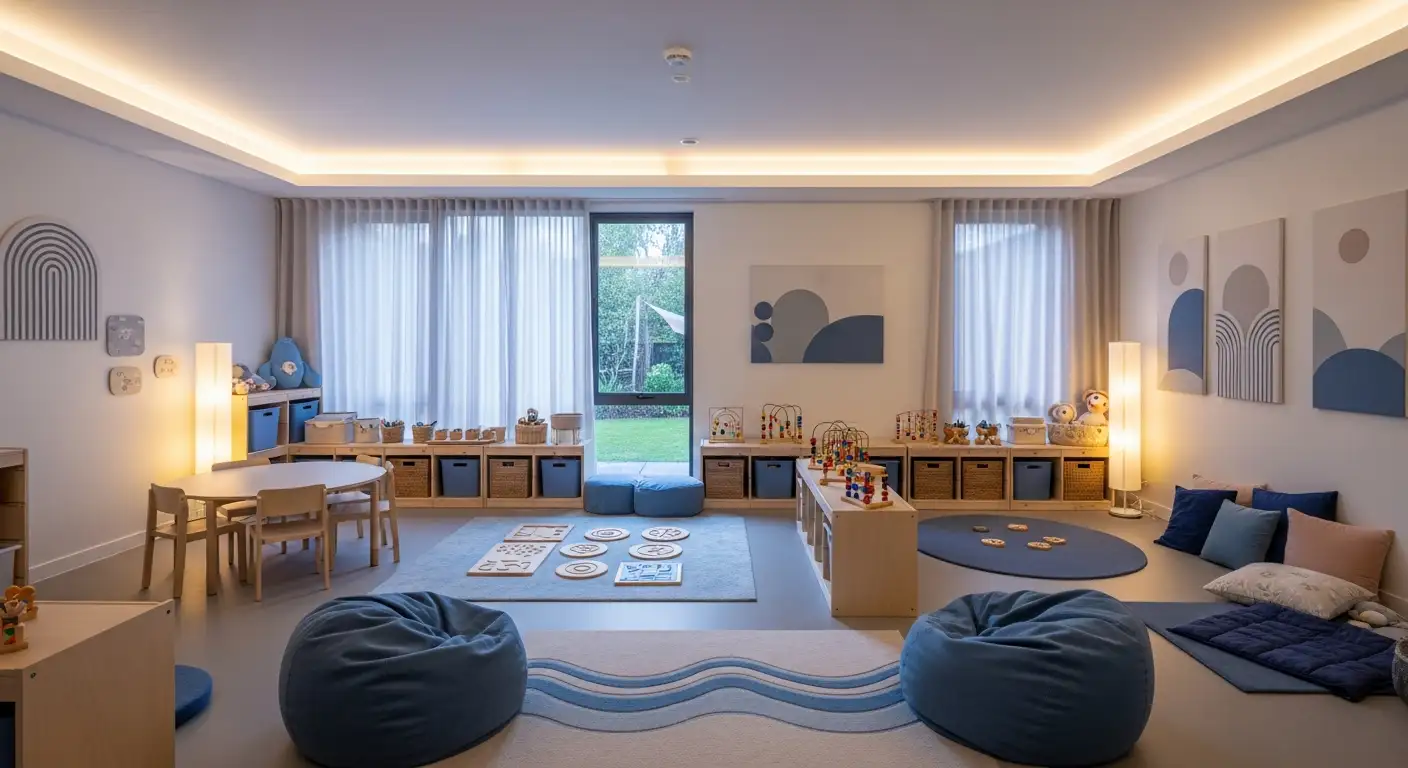
ABA Therapy To Support Emotional Expression In Young Children
Harnessing ABA Therapy to Enhance Emotional Expression in Early Childhood Autism

Understanding Functional Communication Training (FCT) In ABA Therapy
Unlocking Communication: How Functional Communication Training Transforms ABA Therapy

ABA Therapy To Reduce Argumentative Behavior In Children
Transforming Challenging Behaviors: The Role of ABA in Autism Care
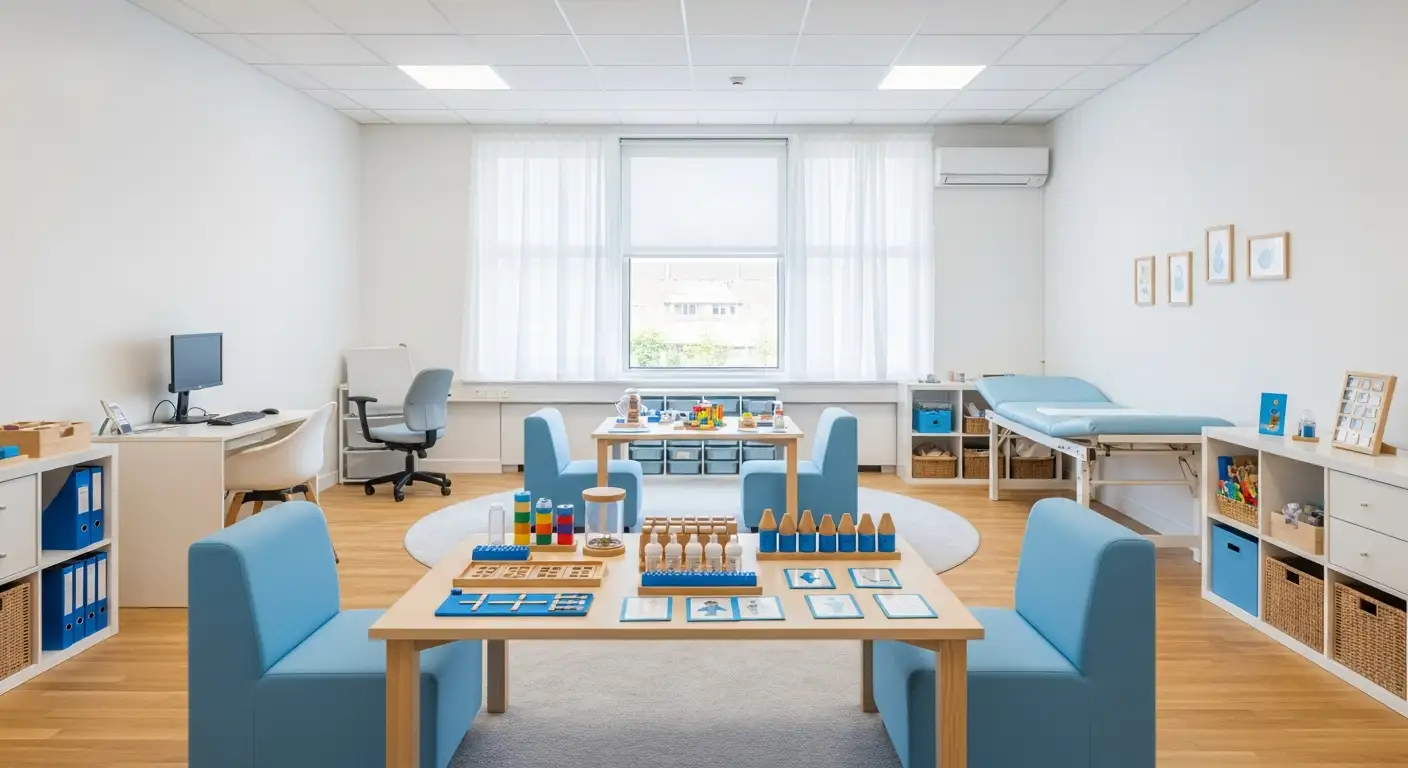
Teaching Independent Decision Making Through ABA
Unlocking Autonomy: The Role of ABA in Fostering Independent Decision Making

The Role Of ABA Therapy In Supporting Children With Social Challenges
Unlocking Social Potential: How ABA Therapy Empowers Children with Autism



